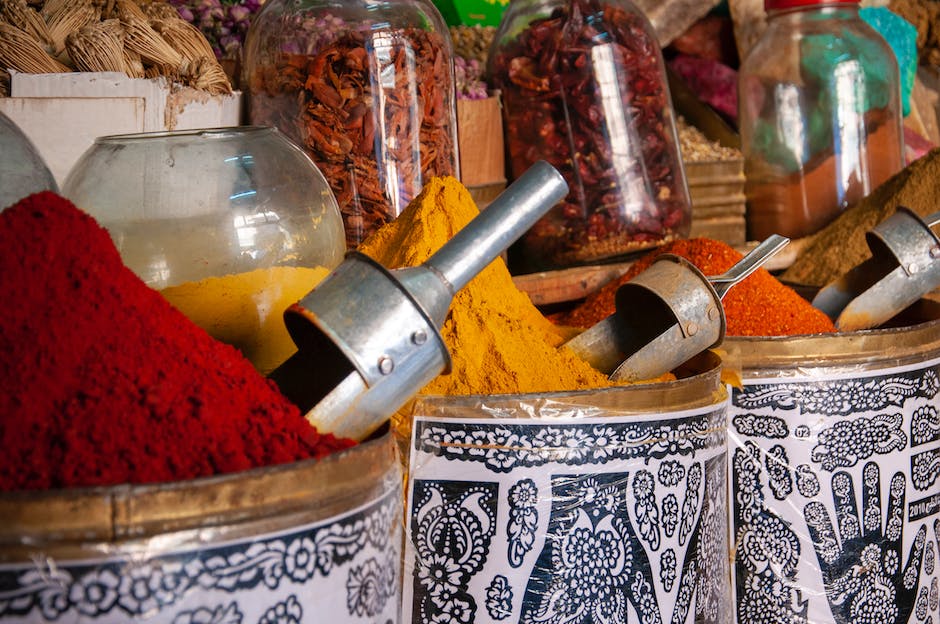Welcome to my blog post all about saffron for dark spots! If you’ve been struggling with dark spots and pigmentation on your skin, saffron might just be the answer you’ve been looking for. Not only can saffron help lighten dark spots, but it can also contribute to a more radiant and even skin tone. In this blog post, I’ll dive deeper into the benefits of saffron for dark spots and share some tips on how to incorporate it into your skincare routine.
The Power of Saffron for Dark Spots
Saffron contains powerful antioxidants and vitamins, including vitamin C, which is known for its ability to reduce dark spots and hyperpigmentation. These wonder ingredients work together to inhibit melanin synthesis, the process responsible for the production of dark spots on the skin. By reducing melanin synthesis, saffron helps fade existing dark spots and prevents new ones from forming.
Not only does saffron help with dark spots, but it also has anti-inflammatory properties that can alleviate redness and inflammation caused by acne or other skin conditions. Additionally, saffron is rich in minerals and nutrients that nourish the skin, improving its overall texture and appearance.
How to Incorporate Saffron into Your Skincare Routine
Now that we know the benefits of saffron for dark spots, let me share some tips on how to incorporate it into your skincare routine:
- Saffron-infused serum: Upgrade your vitamin C serum to a saffron-infused one. Look for oil-based serums that specifically target the appearance of fine lines and dark spots. Apply it after cleansing and toning your skin, and follow with a moisturizer.
- Saffron face mask: Create your own saffron face mask by mixing a few strands of saffron with honey or plain yogurt. Apply the mixture to your face and leave it on for about 15 minutes before rinsing it off with lukewarm water. This mask can help brighten your skin and fade dark spots with regular use.
- Saffron eye cream: Don’t forget about the delicate skin around your eyes! Regular use of saffron-infused eye creams can help reduce the appearance of dark circles and brighten the under-eye area.
Remember, consistency is key when using saffron for dark spots. Incorporate it into your skincare routine regularly, and be patient as results may take time to show.
“Saffron works wonders in brightening the skin by reducing dark spots and hyperpigmentation, and improving skin texture.” – Anonymous
So, why not give saffron a try and see the difference it can make for your dark spots? With its powerful properties, this natural ingredient might just become your new best friend in achieving a more even and radiant complexion.
That’s it for now! If you have any questions or experiences to share about using saffron for dark spots, feel free to leave a comment below. I’m here to help!
Stay Radiant,
Discovering the Science Behind Saffron’s Power Against Dark Spots
As we continue exploring the wonders of saffron for dark spots, I’ve stumbled upon some intriguing scientific findings. Let’s dive into what researchers have uncovered about this versatile spice. Known scientifically as Crocus sativus L., saffron isn’t just a culinary delight but a treasure trove of dermoprotective benefits. According to a mini-review by Rigi and colleagues, saffron’s power-packed with chemicals like anthocyanins, flavonoids, and terpenoids. We’re talking about a natural cocktail that offers anti-oxidant, anti-inflammatory, and anti-aging effects, vital for keeping our skin’s youthful glow and fading those pesky dark spots.
- Antioxidant properties: These help in neutralizing harmful free radicals that can cause dark spots.
- Anti-inflammatory action: Useful for reducing skin irritation and redness.
- Anti-aging effects: Slows down the signs of aging, including dark spots and fine lines.
But wait, it’s not all sunshine and rainbows. An article by Hu and team talks about black spot disease in saffron plants. This issue affects the plant’s health and may impact its productivity, which is a bummer since we want the best quality saffron for our skin, right?
What about saffron through the ages? Well, Mzabri and the crew give us an enchanting peek in their study into saffron’s storied past and how its journey across civilizations isn’t just about spice and flavor, but also about its role in traditional medicine and skin care.
Oh, and we mustn’t overlook the practical side of things. When it comes to determining the real McCoy in the world of saffron, it’s all about authenticity. The research by Djozan and associates, which you can read here, reveals how thin-layer chromatography and image analysis can identify genuine saffron. This ensures we’re getting the good stuff for our skin.
Major compounds like crocin, picrocrocin, and safranal contribute towards the unique characteristics of saffron—the golden yellow color, the bitter flavor, and delicate aroma, respectively.
So, there you have it, my friends, a sprinkling of knowledge flourished with the mystical wonders of saffron. Our journey through science has given us a better understanding of how this “Red Gold” might help us combat those stubborn dark spots and illuminate our skin’s natural beauty.
Answering your Questions on Saffron for Dark Spots
Can saffron effectively remove dark spots?
Yes, saffron can effectively remove dark spots on the skin. It contains vitamin C and antioxidants, which help inhibit melanin synthesis and lighten pigmentation. Regular use of saffron-infused products can lead to a more even skin tone and reduce the appearance of blemishes like dark spots and pigmentation.
How long does it take for saffron to lighten the skin?
It takes at least 15 minutes for saffron to lighten the skin.
Which ingredient, turmeric or saffron, is better for improving skin condition?
Turmeric is better for improving skin condition compared to saffron. Turmeric has antioxidant, anti-microbial, and anti-inflammatory properties that help fight skin conditions including acne scars, bacterial infections, and inflammatory skin conditions. Research has shown that curcumin, found in turmeric, reduces sebaceous gland activity, making it effective against acne. Saffron, on the other hand, may encourage faster shedding of skin cells, but turmeric offers a wide range of potential health benefits and specifically targets skin issues.
Is it safe to directly apply saffron on the face?
Yes, it is safe to directly apply saffron on the face. Saffron serves as a natural moisturizer, keeping the skin hydrated and soft. It contains vitamins and minerals that nourish the skin. Additionally, saffron can help in reducing inflammation, hyperpigmentation, and UV damage. It is also believed to brighten the complexion by fading dark spots and promoting a balanced skin tone. Furthermore, saffron can improve blood flow, which contributes to a natural glow on the face. Overall, using saffron on the face can help eliminate blemishes and enhance skin appearance.
Where can I find saffron specifically for treating dark spots?
You can find saffron specifically for treating dark spots in the KUMKUMADI Ayuga 100% Skin Radiance Face Oil with Saffron & Lotus Extracts. This oil-based serum is clinically proven to target dark spots, even skin tone, and reduce the appearance of fine lines.
Are there any reviews on using saffron for treating dark spots?
There is one review on using saffron for treating dark spots, but the reviewer stated that it did nothing to diminish the dark spots on their face.
How can saffron be used to effectively reduce dark spots on the face?
Saffron can effectively reduce dark spots on the face by lightening pigmentation and exfoliating the skin, leading to a more radiant and even complexion.
What is considered the best saffron option for treating dark spots?
The saffron oil serum is considered the best option for treating dark spots. This clinically proven brightening oil serum can effectively target dark spots, even out skin tone, and reduce the appearance of fine lines. It is recommended to use this serum 1-2 times a week for best results.
In what way should saffron be applied on the face for maximum effectiveness?
To maximize the effectiveness of saffron on the face, it should be applied as a thick paste using rose water. Leave the paste on the face for 15 minutes and then rinse off with lukewarm water. This application method helps reduce inflammation, brightens the skin, reduces hyperpigmentation, and provides protection against UV radiation.
What is the correct method of using saffron for achieving skin whitening?
The correct method of using saffron for achieving skin whitening is by making a saffron face mask. Crush 3 strands of saffron with a mortar and pestle and mix it with 1 tbsp. of honey. Apply this mixture on the skin and leave it for 15-20 minutes before rinsing off with water. Saffron has skin brightening properties that can help reduce blemishes and dark spots, providing a natural whitening effect.
What are the benefits of saffron for achieving skin whitening?
Saffron helps in achieving skin whitening by lightening dark spots, blemishes, hyperpigmentation, and achieving a more even skin tone. Its skin-lightening properties make it a valuable ingredient in skincare products.
Hello, I'm Kristen Blake—a passionate advocate for radiant, youthful skin at any age. At 46, my life's work blooms from an unquenchable curiosity about the active ingredients that promise us the elixir of youth in a bottle. My days are spent immersed in the latest scientific research; every study, every breakthrough, fuels my journey.
But for me, the pursuit is more than academic. I test the wisdom of science on my own skin, embracing each wrinkle as a whispering challenge, and every age spot as a riddle to solve. As I decode the secrets of anti-aging, my experience becomes a beacon for those who seek guidance in the graceful art of growing older without losing their sparkle.
Join me as I share my discoveries and help you navigate the ever-evolving landscape of skin care. Together, we'll celebrate beauty that doesn't fade, but matures with wisdom and self-care.




